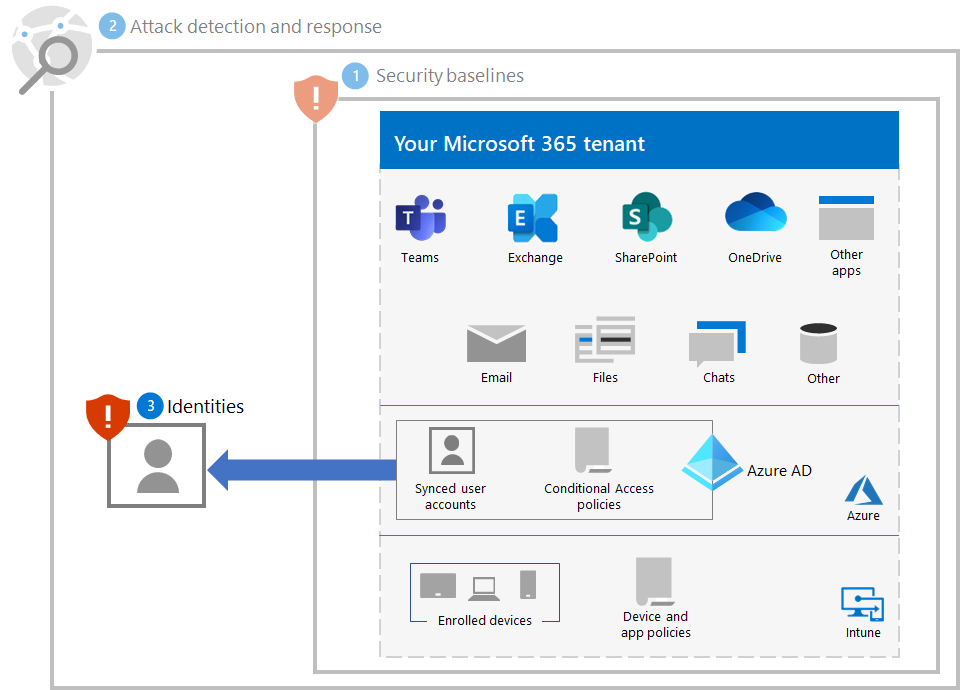Step 3. Protect identities
Use the following sections to protect your organization from credential compromise, which is typically the first stage of a larger ransomware attack.
Increase sign-in security
Use passwordless authentication for user accounts in Microsoft Entra ID.
During the transition to passwordless authentication, use these best practices for user accounts that still use password authentication:
- Block known weak and custom passwords with Microsoft Entra Password Protection.
- Extend blocking of known weak and custom passwords to your on-premises Active Directory Domain Services (AD DS) with Microsoft Entra Password Protection.
- Allow your users to change their own passwords with Self-Service Password Reset (SSPR).
Next, implement the Common identity and device access policies. These policies provide higher security for access to Microsoft 365 cloud services.
For user sign-ins, these policies include:
- Requiring multi-factor authentication (MFA) for priority accounts (immediately) and eventually all user accounts.
- Requiring high-risk sign-ins to use MFA.
- Requiring high-risk users with high-risk sign-ins to change their passwords.
Prevent privilege escalation
Use these best practices:
- Implement the principle of least privilege and use password protection as described in Increase sign-in security for those user accounts that still use passwords for their sign-ins.
- Avoid the use of domain-wide, admin-level service accounts.
- Restrict local administrative privileges to limit installation of Remote Access Trojans (RATs) and other unwanted applications.
- Use Microsoft Entra Conditional Access to explicitly validate the trust of users and workstations before allowing access to administrative portals. See this example for the Azure portal.
- Enable Local Admin password management.
- Determine where highly privileged accounts are signing in and exposing credentials. Highly privileged accounts should not be present on workstations.
- Disable the local storage of passwords and credentials.
Impact on users and change management
You must make the users in your organization aware of:
- The new requirements for stronger passwords.
- The changes in sign-in processes, such as the required use of MFA and the MFA secondary authentication method registration.
- The use of password maintenance with SSPR. For example, no more calls to helpdesk for a password reset.
- The prompting to require MFA or a password change for sign-ins that are determined to be risky.
Resulting configuration
Here's the ransomware protection for your tenant for steps 1-3.

Next step
Continue with Step 4 to protect devices (endpoints) in your Microsoft 365 tenant.
Feedback
Coming soon: Throughout 2024 we will be phasing out GitHub Issues as the feedback mechanism for content and replacing it with a new feedback system. For more information see: https://aka.ms/ContentUserFeedback.
Submit and view feedback for
